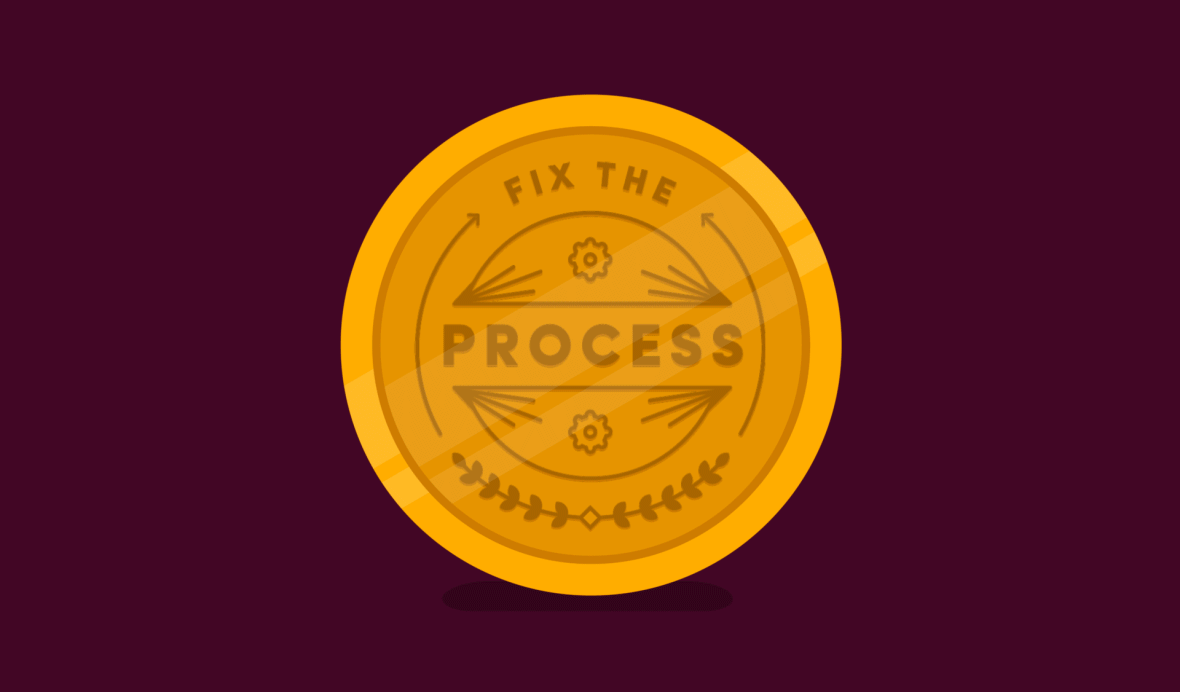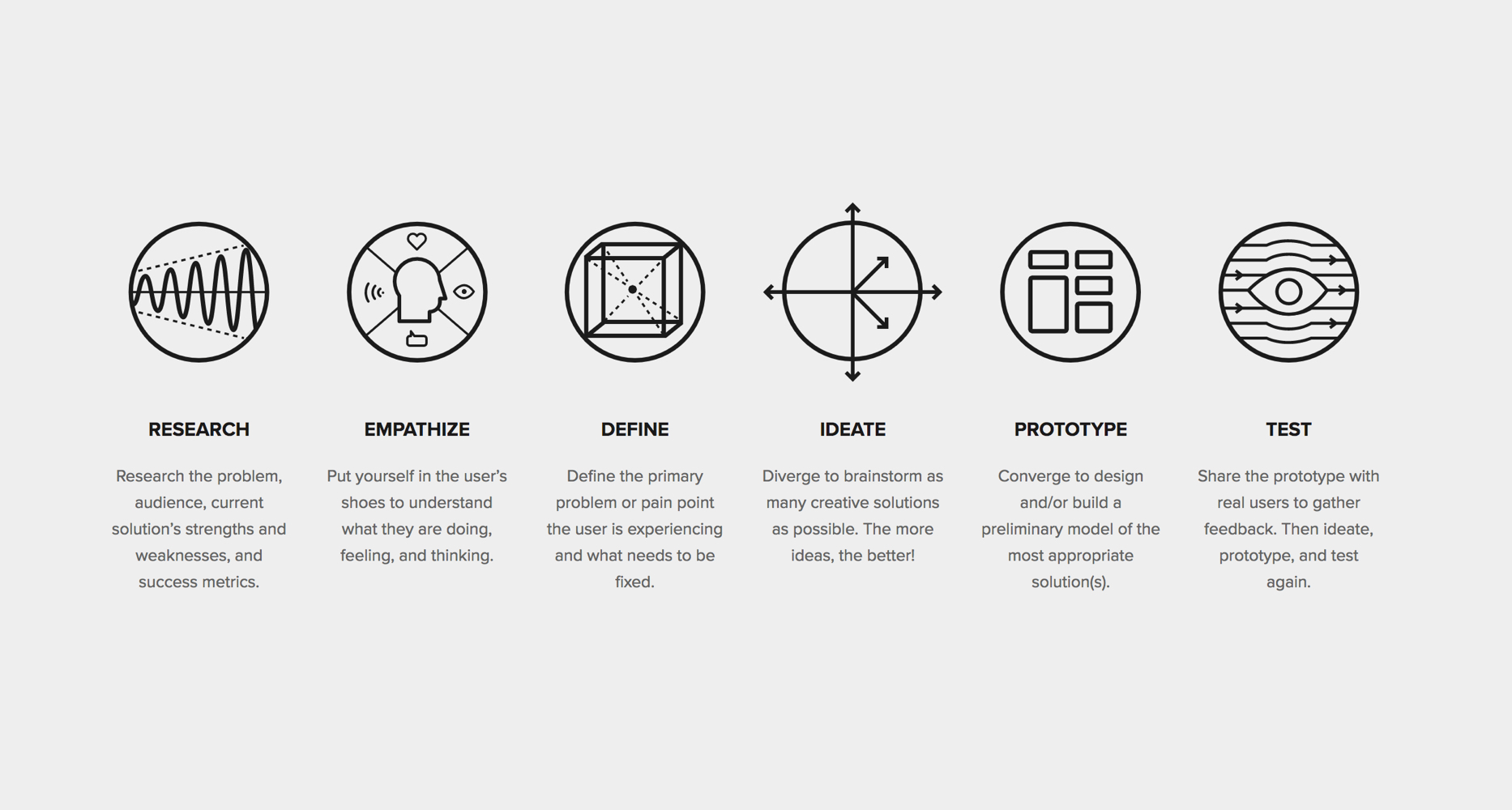Is Your Sales Software Broken, or Is It Your Processes?

In the coin toss of design decisions, you can chose to improve your product or your processes. Making the right decision could dictate whether you win or lose the game.
For instance, picture this:
Your organization invested a ton of money into a new CRM tool that helps your sales reps stay organized and provides the data points your executive leaders need to track success.
You met with the sales team, trained them on the process and tool, and sent them off to the races.
A few weeks later, you pull up the fancy CRM dashboard, excited to finally have visibility into their progress.
But as you start reviewing everything, you notice something’s…off. There isn’t as much data as you expected, and the data that is there doesn’t seem right.
What’s the deal?
Most likely, the real problem isn’t the product you purchased. It’s your sales and software design processes.
The Problems with the Process
This is an all-too-common scenario.
Executives design their company’s sales process with the business in mind, focusing primarily on metrics. Subsequently, their off-the-shelf sales tools are designed the same way, focusing on providing key data points.
The problem is that sales processes and tools don’t align with the sales rep’s needs or the customer’s journey. Reps often go rogue if they feel like a process, tool, or policy is just creating busy work instead of providing value.
The problem is that sales processes and tools don’t align with the sales rep’s needs or the customer’s journey.
Then, when leaders realize they aren’t getting the data or results they need, they think it’s a software issue and ask their IT team to fix it. IT usually has bigger problems, so they look for a quick fix: a cool plugin, a new feature, or an upgrade to existing software. Those may cure some of the symptoms, but they won’t solve the root problem. (They may even create other issues.)
The irony is both stakeholders actually have the same end goal: make more sales. The only way to do that, though, is to start with the customer’s needs and draw backwards — the opposite of how sales software and processes are usually designed and implemented.
Using Design Thinking for Software and Sales Process Improvements
Design thinking can save the day. It doesn’t just lead to better software, but also better processes and experiences for everyone.

Design thinking starts with research and empathizing: two steps that are typically skipped in software development’s quest to get to a functional product.
Research helps understand who your stakeholders are (sales reps/users, end customers, business leaders), the process or journey they go through, and the constraints that will dictate the new solution. This information provides context about the landscape, how your current solution is working, where the friction points are, and how it could be improved.
Then, the Empathize stage helps see the process and product through the stakeholders’ and end users’ eyes so you can create a solution that truly meets their needs on all levels (functional, emotional, aspirational, etc.).
Journey mapping is an invaluable exercise to do during the Research and Empathy phase.

A Sample Customer Journey Map. Source: MappingExperiences.com
Enterprise firms typically have a “process” map that details the steps of the process, as well as other technical specifications and operating policies. These maps provide a functional understanding of the process, but they don’t account for the emotional side of the experience.
Where does the process go smoothly?
Where does it fall short?
Where are the high points for sales reps and customers?
Where are the low points?
These are all questions user research and journey mapping help answer. By taking a process map and building a journey map on top of it, you can evaluate how well each step of the process is going (or which rung it has reached on the Experience Success Ladder) and how to get to the next level. (For more information on journey mapping, check out our article on empathy exercises.)
By taking a process map and building a journey map on top of it, you can evaluate how well each step of the process is going (or which rung it has reached on the Experience Success Ladder) and how to get to the next level.
This information comes in handy when facilitating design conversations during the Define step, when you combine the research and empathy insights to define a vision statement and user stories that address the problem you’re solving. This is the perfect opportunity to pause and make sure everyone is aligned before moving forward.
With a clear vision for the stakeholders’ primary pain points, you can Ideate on how to resolve them. It’s tempting to start with this step (and many people who prioritize technical execution over leading with ease of use do), but researching, empathizing, and defining first leads to more ideas, better ideas and a keen user happiness focus during this stage and beyond.
Once you’ve brainstormed tons of ideas during ideation, and understood where to reduce friction points, it’s time to evaluate which solutions best align with your definition of success, then Prototype and Test a preliminary model. For software improvements, this could be a prototype that tests your hypothesis without spending time, money, and other resources creating the full product. For process improvements, this could involve gathering a small test group to role play or try the new process and see if it would produce better outcomes.
The design thinking process allows you to not only solve the software and process pain points your users and company are feeling today, but also uncover other ideas for improvement that you could pursue in the future.
The design thinking process allows you to not only solve the software and process pain points your company is feeling today, but also uncover other ideas for improvement that you could pursue in the future.
Unlock ROI from the Inside Out
These internal changes have massive ROI. Software and sales process improvements make it easier for sales reps to do their job, leading to huge time and cost savings, higher employee satisfaction, and better customer service. In turn, customers are happier too, resulting in higher sales, satisfaction, retention, and referrals.
For example, our team at Drawbackwards initially partnered with a client to redesign their sales tool. After getting under the hood, we saw that the software was just one piece of the puzzle. It had several flaws that made it difficult or impossible to use. Even worse, it didn’t align with their sales process or methodology. Reps were abandoning the tool, and sales were suffering.
In order to improve the experience, we evaluated the entire sales ecosystem, streamlined their sales process, and designed a new software experience that aligns with that process. As a result, we were able to deliver exponentially more value for the business, sales reps, and customers.
Software and sales process improvements make it easier for sales reps to do their job, leading to huge time and cost savings, higher employee satisfaction, and better customer service. In turn, customers are happier too, resulting in higher sales, satisfaction, retention, and referrals.
Don’t Just Mask the Symptoms. Find a Cure.
Like our client, your company might be realizing that your sales software is falling short. Sometimes, it’s slow or doesn’t work at all. It asks for the wrong data at the wrong time. It doesn’t give you the flexibility to enter and track information the way you want to or need to for your customers.
You could solve some of those symptoms and feel temporary relief with new out-of-the box software or a few cosmetic design and development fixes. But finding a long-term cure for all of them requires looking at the big picture through user-centric design thinking and changing the way you design your sales process and software.